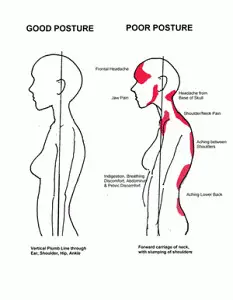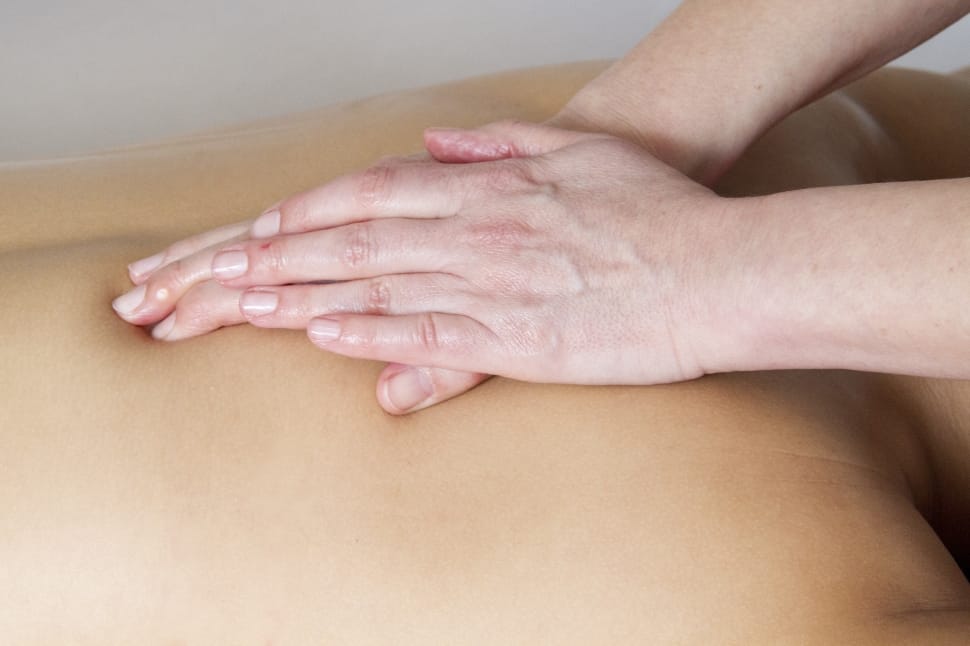Are you fed up with suffering from unbearable sciatic pain? Well, don’t worry! With a few easy and simple tricks, you can get quick relief from sciatica and finally have the freedom to move around with ease. In this article, we’ll reveal some of the most effective ways to relieve your sciatic pain fast. So read on to begin your journey to healing!
Contents
Medicate in Moderation
Medication can be a good option for relieving sciatic nerve pain, though you should use them with caution. Nonsteroidal anti-inflammatory drugs (NSAIDs) such as ibuprofen, aspirin, naproxen, and acetaminophen are common choices for treating acute sciatica pain. In addition to counter medications like Tylenol or Aleve, there may be prescription-strength NSAIDs available through your doctor that could provide more relief.

For some cases of chronic sciatica pain, opioids like oxycodone, hydrocodone, or codeine may be recommended. However, there are many health risks associated with opioid use due to its addictive properties, and must only be used under certain conditions for the shortest duration possible.
It’s important to speak to your doctor about any type of medication for chronic sciatic nerve pain because the long-term effects may not always be as desirable as the short-term ones. Be sure not to exceed dosage recommendations and try alternate methods of relief if possible before self-medicating.
If you choose to medicate in moderation while engaging in other sciatica pain treatments like physical therapy or exercise therapy, it could greatly improve your overall relief and more quickly bring you closer to managing your pain without the assistance of traditional medicines.
Pay Attention to Posture
 When you have sciatica symptoms and seeking relief, one of the most important things to do is pay attention to your posture. Good form not only can help reduce the pain but prevents strain on the sciatic nerve while sitting or standing. Poor posture can worsen sciatic pain that flares up from time to time, and regular attention can help prevent stiffness or discomfort from developing.
When you have sciatica symptoms and seeking relief, one of the most important things to do is pay attention to your posture. Good form not only can help reduce the pain but prevents strain on the sciatic nerve while sitting or standing. Poor posture can worsen sciatic pain that flares up from time to time, and regular attention can help prevent stiffness or discomfort from developing.
Slouching on a couch for too long or holding onto a slouched position during daily activities like working or playing a game can cause increased pressure and irritation to your low back and surrounding muscles which leads to sciatica.
Wherever you are – standing, sitting, walking – take some time to practice good form. Press your chin in slightly so your head is in a neutral position, tuck in the abdominals for protection, and lengthen the spine with shoulders drawn down away from the ears.
It’s also important not to maintain one position for too long — it puts strain on nerves and muscles all over the body when remaining in one spot, no matter how good that position may be. It’s more important now than ever to remember these small tweaks because many of us are stuck in our homes hunched over laptops with drooping spines all day long. Simply being mindful of these habits throughout your day can lead to greater relief once it’s over as well as prevention against future attacks of sciatic pain flare-ups!
Use Ice Packs and Heating Pads
When it comes to relieving sciatic pain, using ice packs and heating pads can be particularly helpful. Cold provides numbing and anti-inflammatory effects and can be used for acute (new) sciatic pain or chronic (long-term) sciatic pain.
To apply cold, use an ice pack or a package of frozen vegetables wrapped in a thin towel. Place it on the painful area of your low back or buttock for 10 minutes at a time every few hours, up to 3 times a day until you experience some relief. Ice is especially helpful if there is swelling associated with your current episode of sciatica.
Heat may also help, as it can increase blood flow to the nerve in order to reduce muscle spasms in the surrounding area that could be causing pressure on your nerve root. A heating pad set on low, a warm compress made with a damp towel, or a hot water bottle applied directly to the painful area for 15 minutes at a time every few hours can temporarily relieve some of your symptoms and provide long-term relief from sciatica and other types of chronic lower back pain.
Gentle Exercise
Gentle exercise is a great way to lessen the pain associated with sciatica. If you suffer from this condition, it can help to engage in simple exercises and stretches that work to reduce the discs’ pressure and improve their flexibility. However, you should be careful not to overdo it, as doing too much activity can further damage the discs or cause more inflammation.

Walking is one of the best exercises for people suffering from sciatic pain, but stretching can be just as effective. Gentle yoga postures such as downward-facing dog, seated twists, and cat/cow movements are great examples of simple exercises that relax the muscles and ligaments across your lower back and hip area. These postures also help to reduce lower back stiffness and improve your range of motion should also be a part of your routine.
Gentle fitness activities like swimming, biking, or lightweight training can also help relieve pain by loosening tight muscles around the spine while strengthening them at the same time. Plus they are a great way to incorporate physical activity into your daily life without feeling overwhelmed; many classes offer gentle and strength-based programs tailored specifically for those suffering from sciatica or back issues.
Stretching
Stretching can help to relieve sciatic pain fast. It’s a great way to improve spinal flexibility, decrease pressure on the spine, and increase spinal strength in order to prevent future flare-ups.
Most stretches are very gentle, but effective for relieving sciatic pain fast. There are a variety of stretches that can be added to your everyday routine just like you would your favorite TV show. Begin by warming up your muscles with some gentle aerobic exercise, like walking or riding a bike, before you start stretching. Here are some great stretches that can help relieve sciatic pain quickly.

Hamstring Stretch
Lying flat on your back with both legs bent and feet flat against the ground, slowly bring one leg up and grab onto it right above the knee with both hands. Hold this stretch for 30 seconds then relax before repeating it on the other side of your body.
Piriformis Stretch
Sitting with bent legs crossed at the knees, pull one knee towards your chest so that it rests in the crook of your other arm at an arched position stretching out your lower back and glutes for support and balance. Hold for 30 seconds then switch sides and repeat the same steps.
Cat Cow Pose
On hands and knees arch backward into cat pose pushing down into the lowest portion of the spine followed immediately by arching forward into cow pose extending your lower back and pushing outward until the discomfort subsides continue alternating between these poses in smooth rhythmic motion up to 5 times each side slowly relaxing into each posture.
By incorporating these stretches regularly into your everyday routine you will not only reduce pain but improve spinal health as well leading to less frequent flare-ups in the future allowing you not only relief from sciatica but peace of mind as well!
Try Over-the-Counter Meds
Over-the-counter NSAIDs are a good first option for relieving sciatica symptoms. While it may be tempting to try prescription painkillers, the health risks associated with these medications can be serious. OTC nonsteroidal anti-inflammatory drugs (NSAIDs) like Motrin, Advil, and Ecotrin can help reduce inflammation and provide relief from sciatica discomfort.
Before taking an OTC NSAID, review the drug’s label and dosing information with your healthcare provider to ensure you understand the medication’s usage, recommended dosage, potential side effects, or interactions with other medications you take. Generally speaking, low doses of ibuprofen (e.g., Motrin or Advil) or naproxen sodium (e.g., Aleve) should be taken for no more than 10 days at a time to minimize the risks of potentially serious side effects like GI ulcers and stomach bleeding.
When using OTC NSAIDS for sciatica pain relief, it’s important to understand their impact on inflammation levels in your body is temporary; once you stop taking the drugs symptoms may return quickly unless additional treatment interventions are tried. In addition to OTC medications like Motrin or Aleve if moderate to severe is experienced additional treatments should be considered by a doctor/healthcare provider such as physical therapy, medications designed specifically for nerve pain, injections, and/or surgery.
Work With a Physical Therapist
It can be difficult to manage sciatic pain, and many individuals find relief from physical therapy treatments or prescribed exercises. Working with a physical therapist can provide a personalized exercise program specifically designed to target the source of your sciatica symptoms.
You may also benefit from education about possible risk factors for your condition such as poor posture and incorrect lifting techniques. Physical therapy for sciatica can reduce inflammation and discomfort associated with this problem, as well as improve strength, flexibility, and overall quality of life.

Physical therapists focus on manual treatments including massage and manipulation in order to help relieve pain. Your therapist may also recommend specific exercises that target the muscles involved in sciatica such as lumbar flexion exercises, leg lifts, or pelvic tilts.
These exercises should always be performed gently and gradually in order to avoid exacerbating the problem. In addition to strengthening exercises, you may receive treatments that help reduce pressure on your nerves such as ultrasound therapy or electrical stimulation therapies.
For optimum results, it is important to follow any advice provided by your physical therapist on a regular basis at home. Regular exercise should be done correctly following any suggestions provided by the specialist. This will help you not only get better faster but will also help to prevent future recurrences of pain due to sciatica.
Get a Massage
Massage therapy is a very effective way to relieve sciatica pain, as the hands-on approach helps the body to relax and release tension. A professional rubdown can help break up knots in your muscles that are contributing to your sciatica pain. In addition, massage therapy increases blood flow, which can improve tissue healing and reduce inflammation.

When choosing massage therapy for sciatica pain relief, it’s important to find an experienced massage therapist who is familiar with the issue and can provide appropriate deep-tissue treatment. Make sure you explain your symptoms and goals for treatment.
Your therapist might start with Swedish massage techniques, which involve long strokes along the length of your muscles using oil or lotion to reduce friction. From there, deep tissue work may be used on trigger points that are contributing to your discomfort. Myofascial release stretch may also be incorporated during your session in order to improve mobility in targeted areas where you need it most.
It’s helpful if people consult a medical professional before beginning a massage-therapy program so they know what’s right for their particular back pain condition. This will ensure they get the most optimal results from their treatment sessions. When done right, massage can be a great way to alleviate sciatic nerve issues quickly and return you to feeling better than ever in no time!
When to Visit Your Doctor
The above techniques may help to alleviate sciatic pain, but it is still important to make an appointment with your doctor if you are having continued or worsening issues. Also, if any of the following symptoms arise after using home treatment, it is also important to visit your doctor:
- Loss of bladder or bowel control
- Electric shock sensations or numbness
- Severe pain that doesn’t improve
- Weakness or paralysis in the legs that last longer than 24 hours
In rare cases, sciatica can cause permanent nerve damage that requires medical intervention. It can also be caused by a herniated disc pressing on a nerve root. If you have been trying home treatments for your sciatic pain and finding no relief, then it is best to contact your doctor for more information about what might be causing your situation and for advice on how you could more effectively manage the pain.
Frequently Asked Questions
What can I take to relieve sciatica pain?
The most common treatments for sciatica pain relief include physical therapy, non-steroidal anti-inflammatory drugs (NSAIDs) such as ibuprofen and naproxen, muscle relaxants, and epidural steroid injections. Other treatments may include heat and ice therapy, stretching, acupuncture, and massage. Talk to your doctor to determine what treatment is right for you.
How can I alleviate my sciatic pain at home?
- Apply a warm compress or heating pad to the affected area.
- Perform gentle stretches and low-impact exercises such as walking, swimming, or yoga.
- Take an over-the-counter anti-inflammatory medication such as ibuprofen to reduce inflammation and pain.
- Massage the affected area to release tension in the muscles.
- Get proper rest and sleep, as fatigue can aggravate sciatic pain.
- Try using a lumbar support cushion or pillow when sitting.
- Try applying ice or cold packs to the area for 15-20 minutes several times a day.
What exercises help sciatic pain?
- Knee-to-chest stretch: Lie on your back and bring your knee up to your chest. Gently pull your knee in towards your chest until you feel a gentle stretch in the back of your leg. Hold the position for 15-30 seconds and then repeat with the other leg.
- Piriformis stretch: Lie on your back and cross your right leg over your left. Pull your left knee towards your chest while keeping your right leg crossed over. Hold this position for 15-30 seconds and then switch legs.
- Pelvic tilts: Lie on your back with your feet flat on the floor. Tighten your abdominal muscles and tilt your pelvis up, bringing your tailbone towards your navel. Hold for 5 seconds and then relax. Repeat 10 times.
- Hamstring stretch: Sit on the floor with your legs straight out in front of you. Reach forward and try to touch your toes. Hold for 15-30 seconds and then relax.
- Standing calf stretch: Stand facing a wall and place your hands on the wall at shoulder height. Step your right foot back, keeping your heel on the floor. Lean forward until you feel a stretch in the back of your calf.
pain, sciatica, nerve, back, relief, spine, people, treatment, therapy, symptoms, health, pressure, body, knee, inflammation, leg, way, time, surgery, muscles, doctor, position, side, muscle, exercises, care, condition, stretch, massage, patients, chiropractor, treatments, cause, heat, ice, night, exercise, area, disc, acupuncture, sciatica pain, sciatic nerve, sciatic nerve pain, sciatic pain, physical therapy, chiropractic care, pain relief, knee pain, sciatica symptoms, back pain, many people, physical therapist, chronic pain, root cause, spinal stenosis, long periods, medical advice, nerve pain, massage therapy, few weeks, sciatica pain relief, hip pain, heating pad, sciatica relief, sciatica patients, sleeping position, ice pack, home remedies, good news, herniated disc
Conclusion
In conclusion, there are several ways to relieve sciatica pain fast. For some people, simple home remedies like ice therapy and stretching can provide temporary relief. For others, engaging in a combination of exercise, foam rolling and other exercises can help them get to the root cause of their sciatica nerve pain.
If a more strategic approach is needed, it’s best to seek assistance from a physical therapist or another qualified healthcare provider who can create an individualized exercise plan that specifically addresses your sciatic nerve problem.
The achievement of long-term relief may take several weeks or even months, so if you do opt for this approach be sure to stay diligent with your plan and consistent with your stretches and core strengthening exercises for the fastest pain relief. With any plan you choose, the staying patient is key.
If after trying these strategies you still feel no improvement in your sciatica symptoms it’s important to consult a physician as soon as possible upon further investigation they will be able to diagnose the underlying cause and offer more comprehensive treatment plans in order to get you back on track!

Alan Walker is an author, researcher, and contributing writer at Spine Institute NY. He is a typical introvert, coffee fanatic, and freelancer.”

